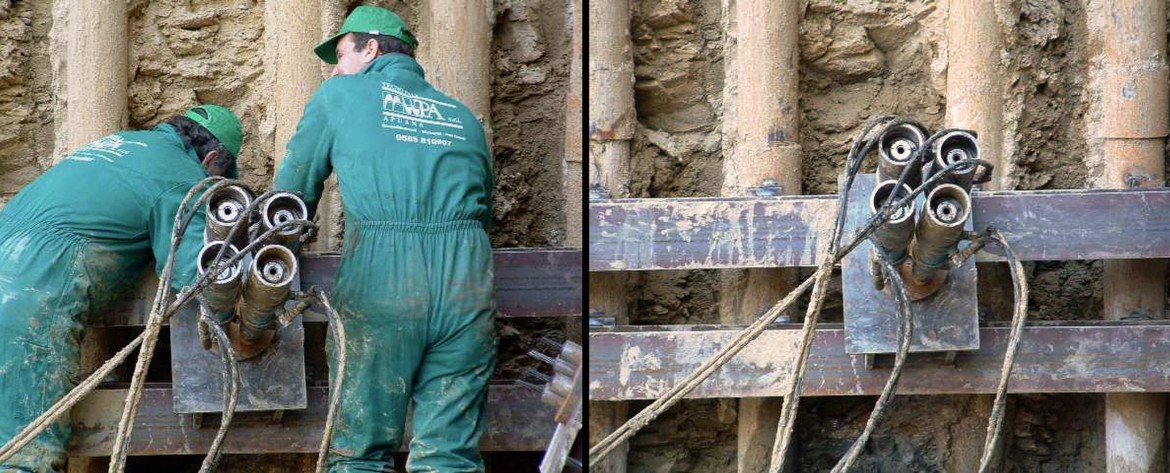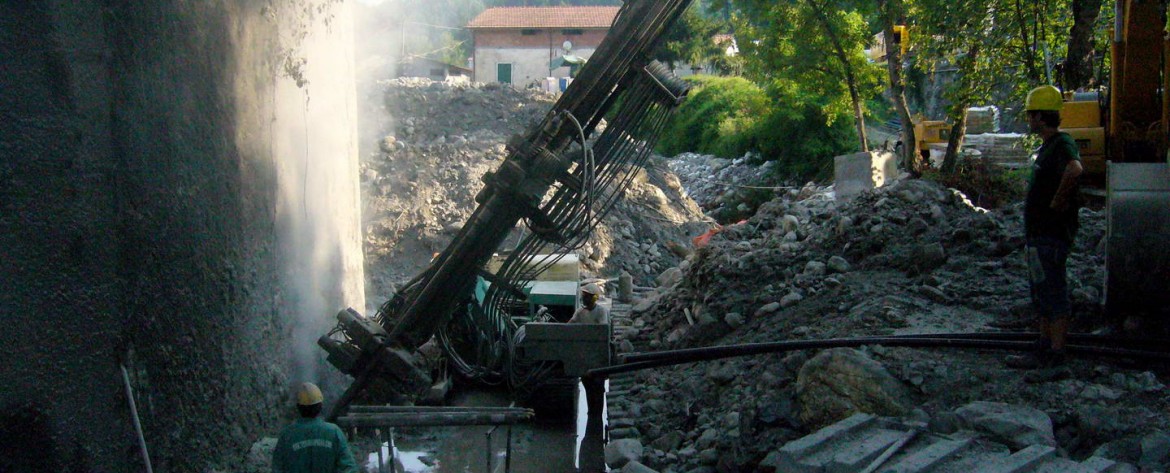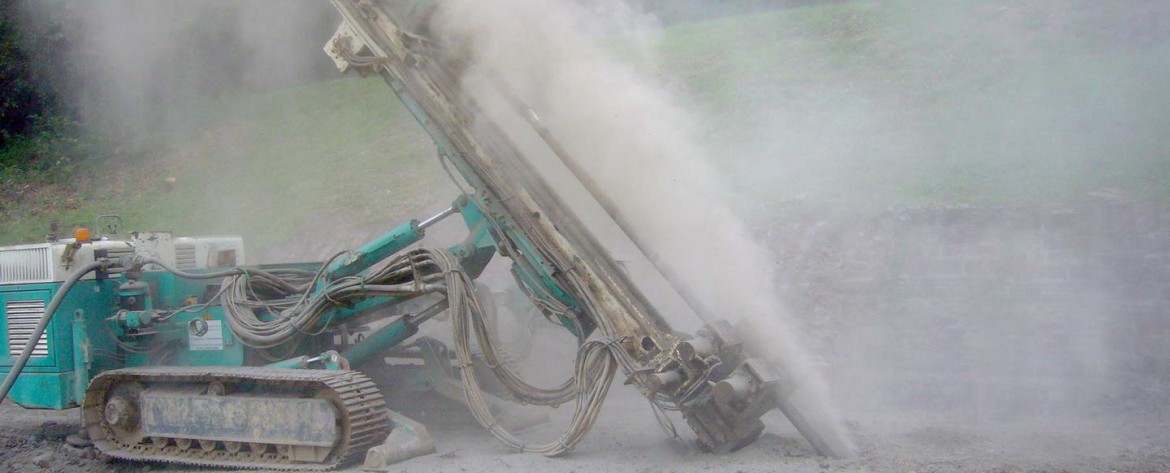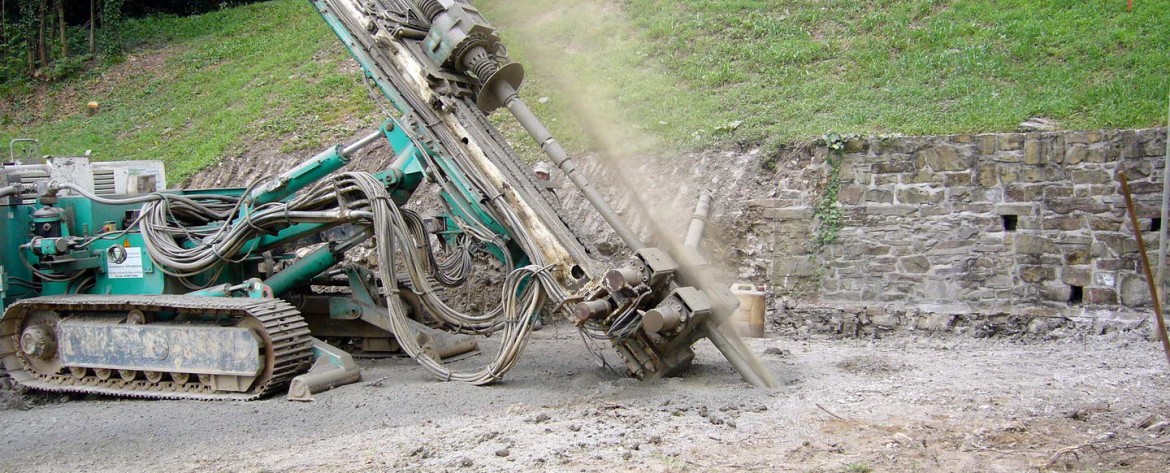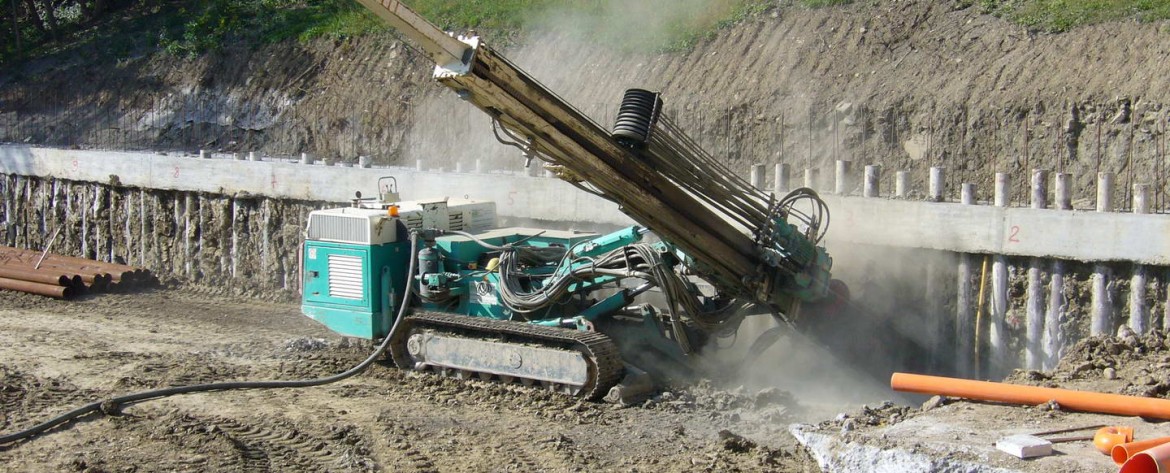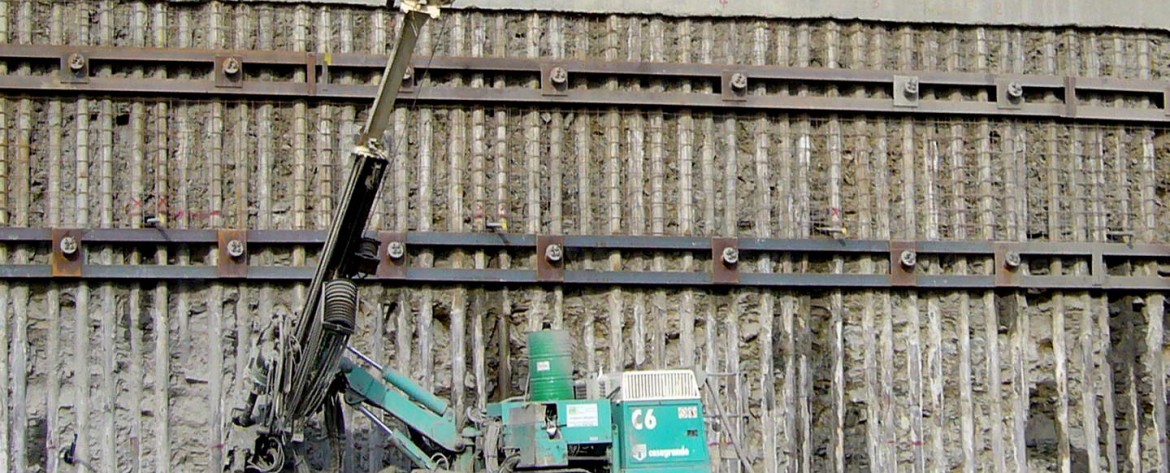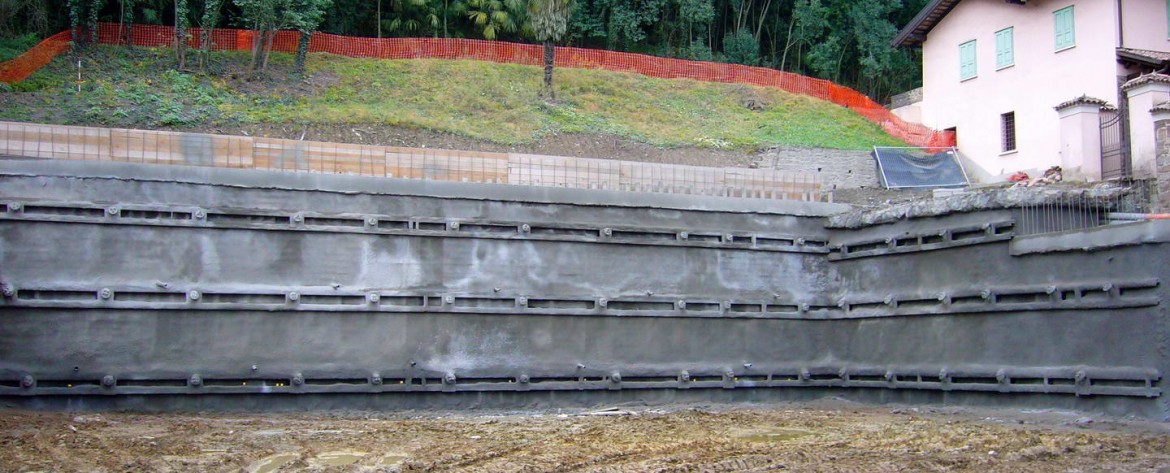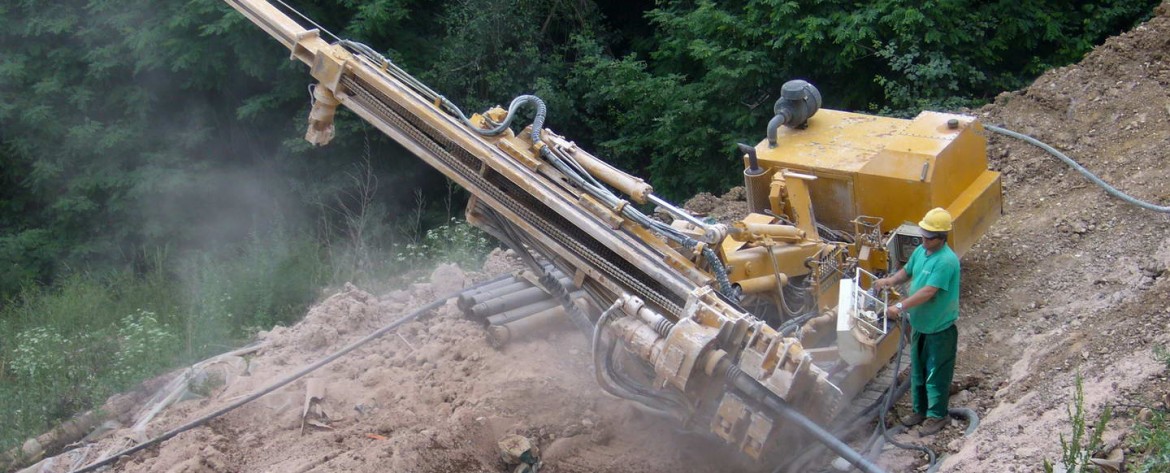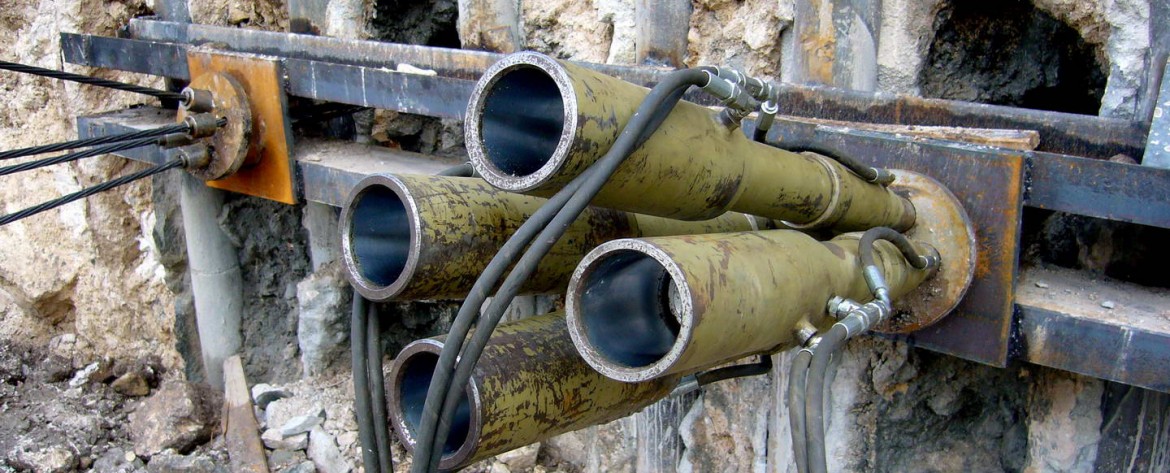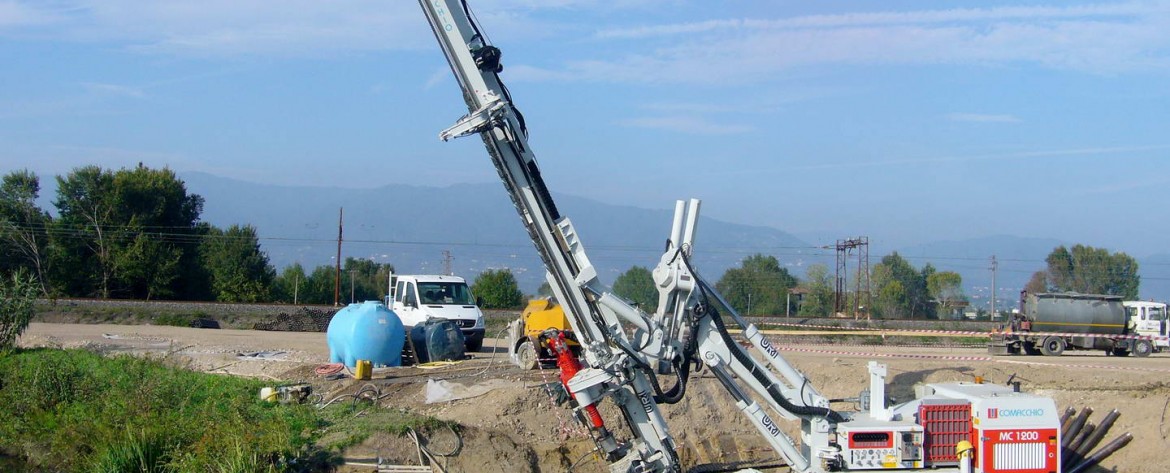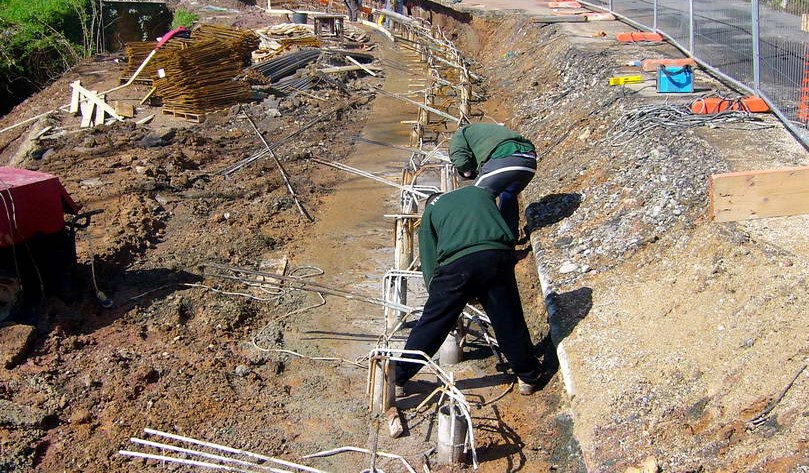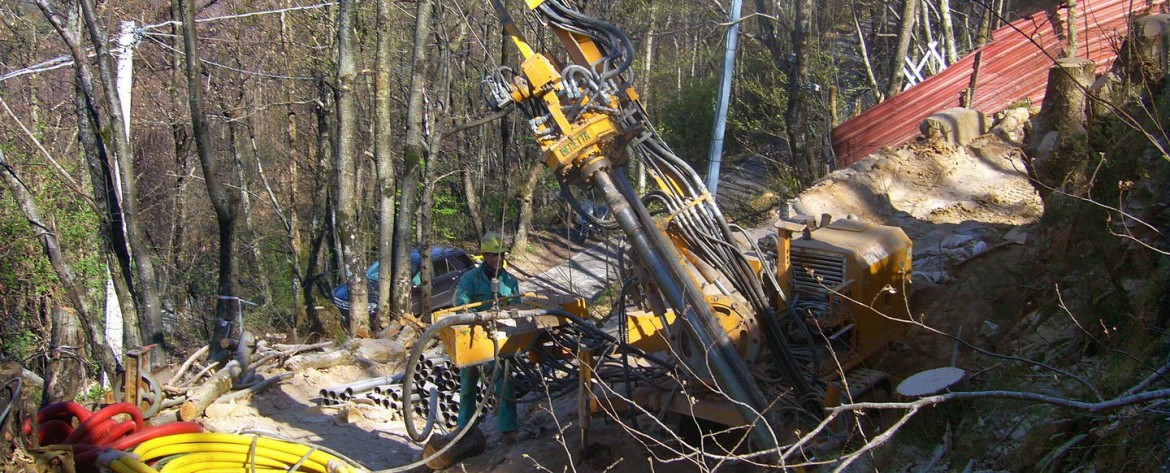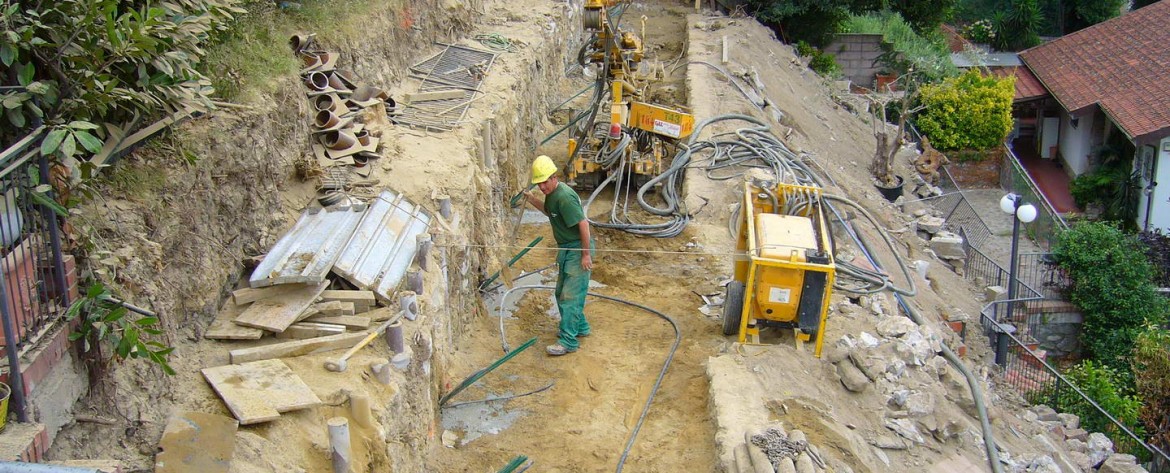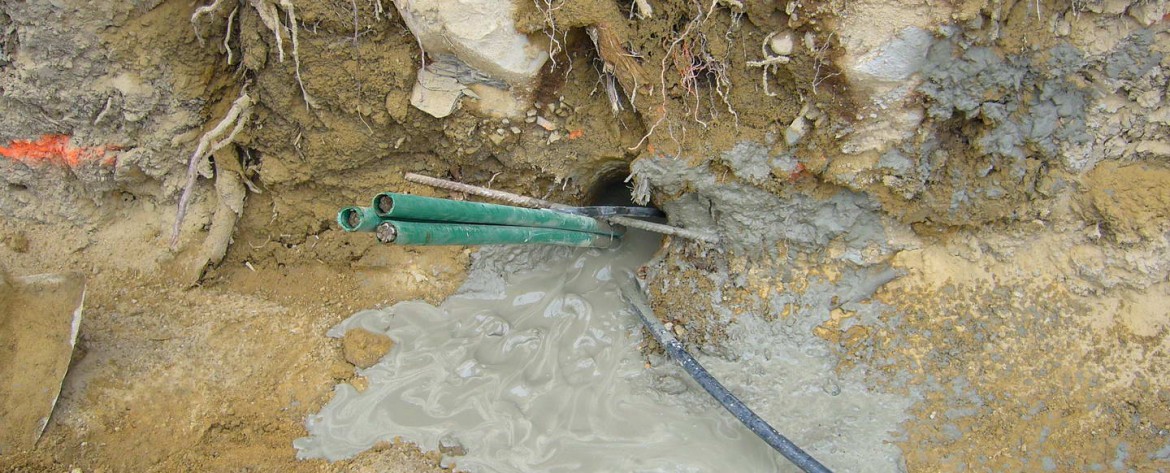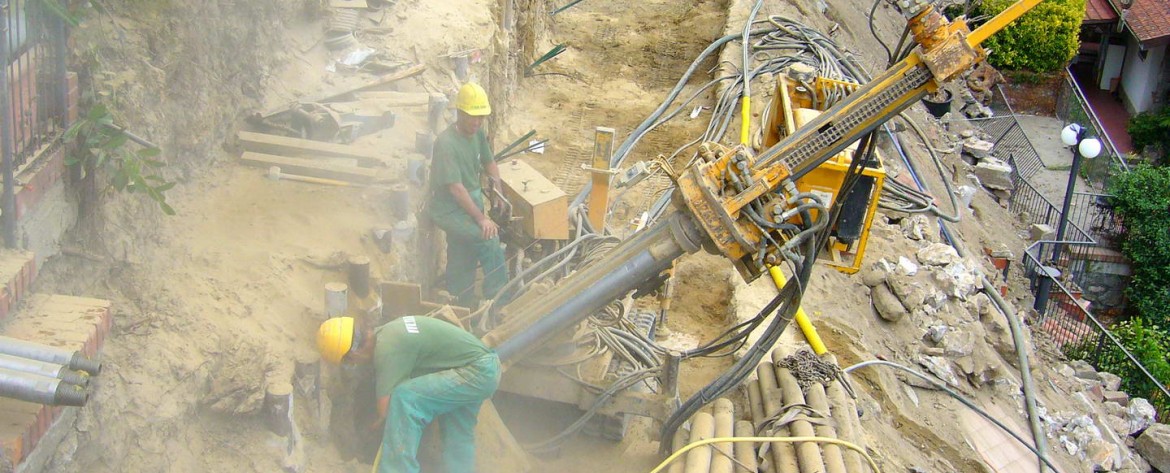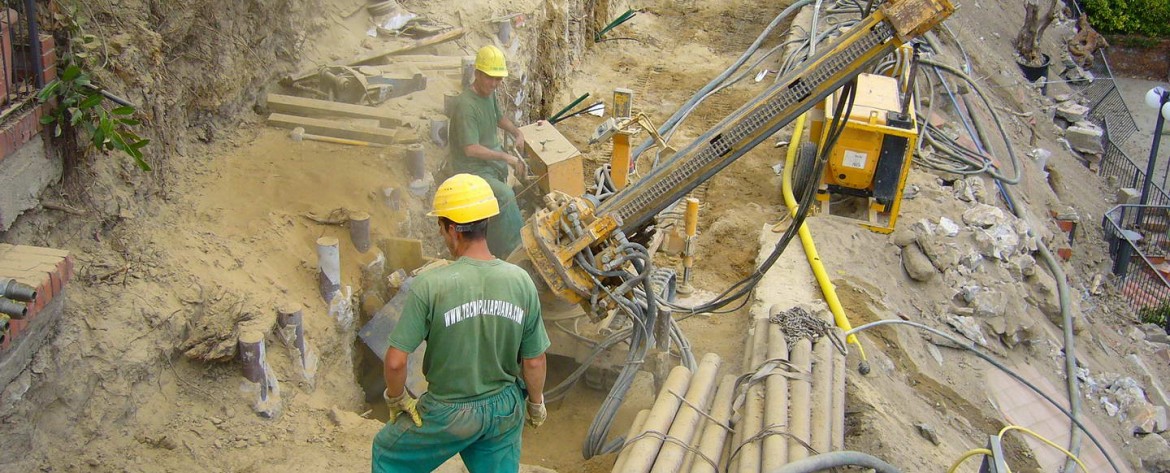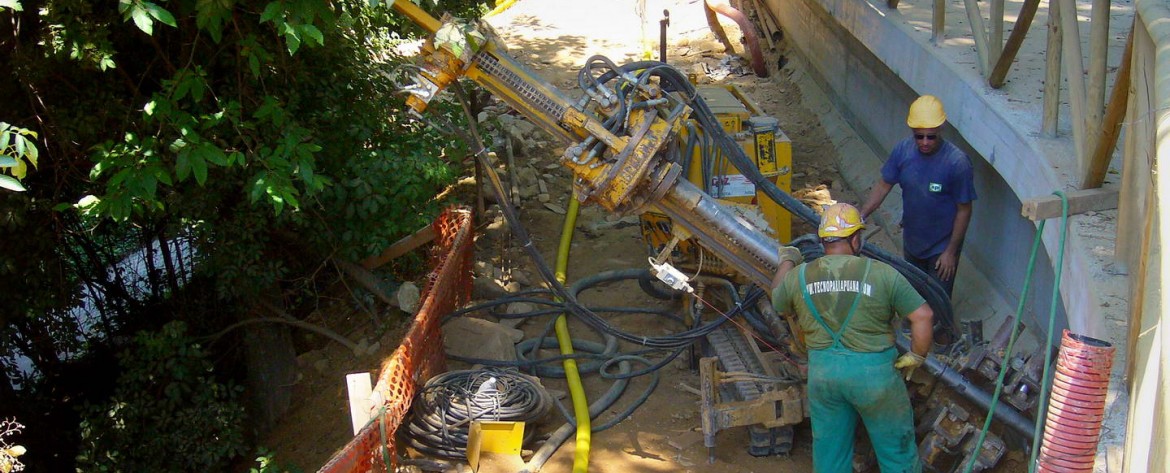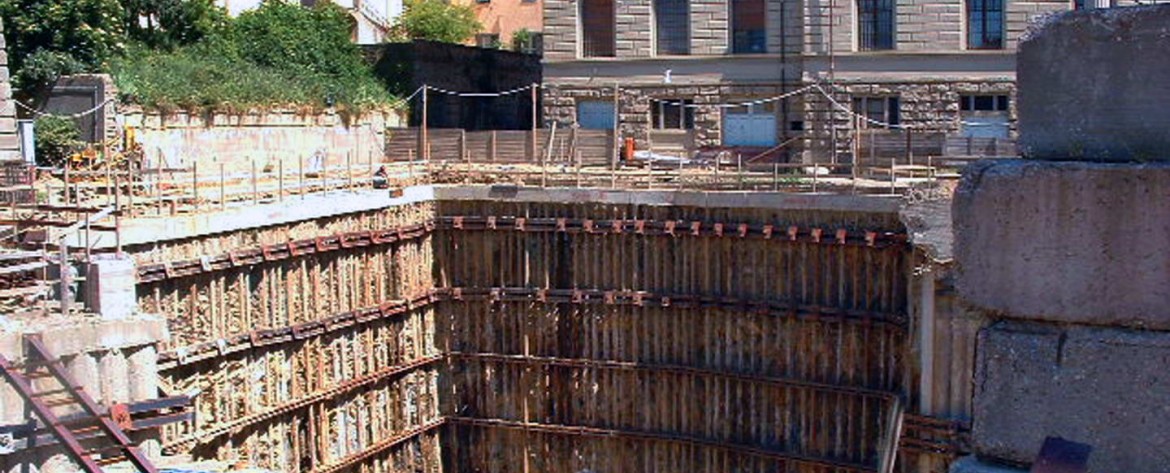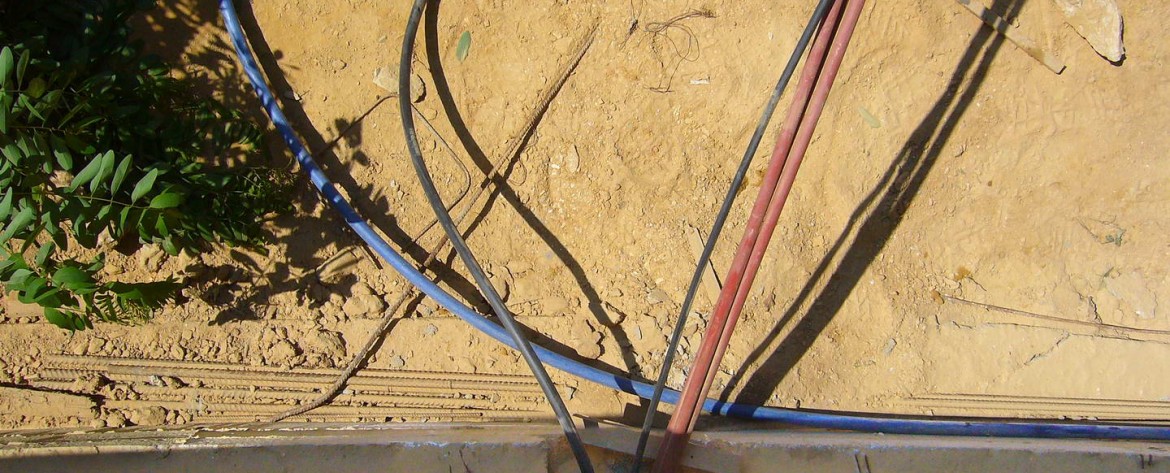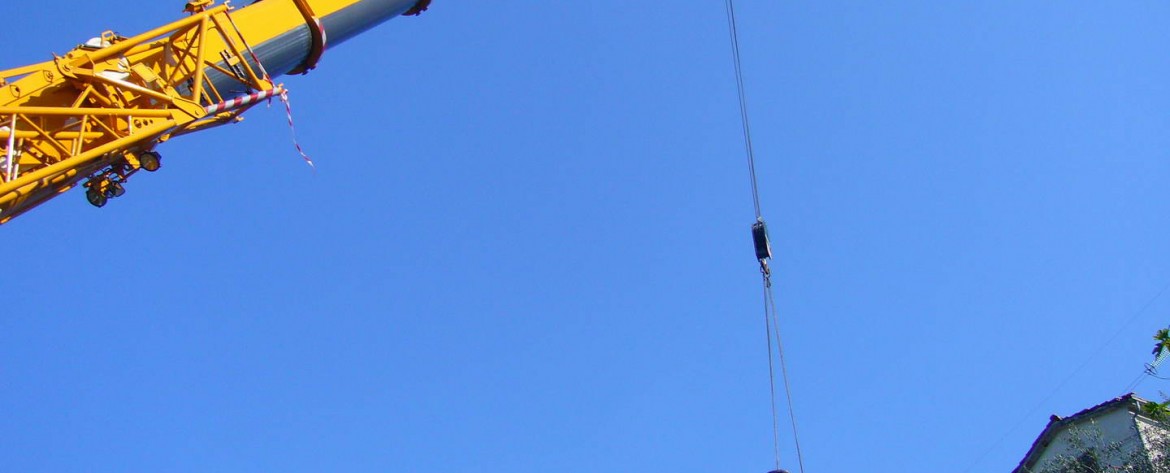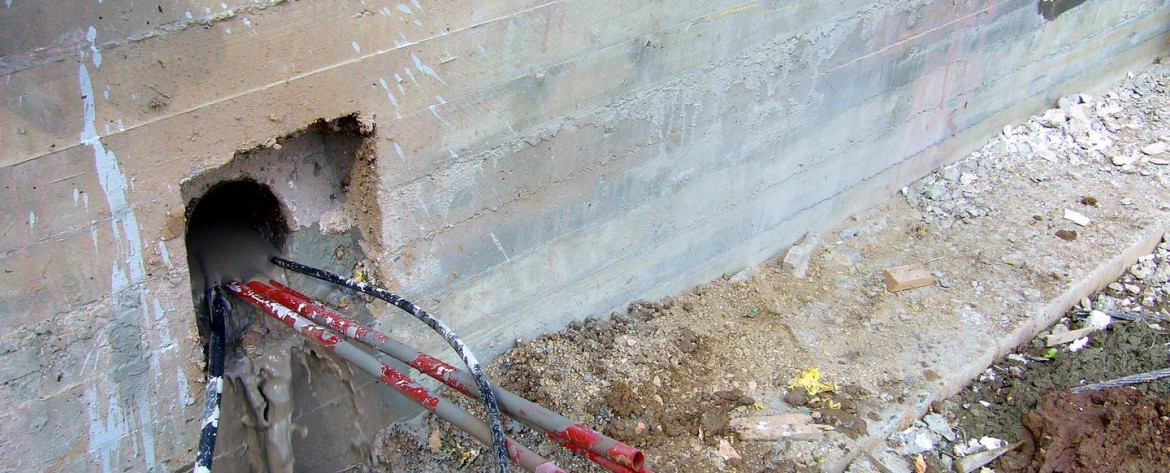Ground Anchors
Ground anchors are structural elements installed in soil or rock used to transmit an applied tensile load deep into the ground. Harmonic steel strand tendons comprising seven 5mm wire strands, or bar tendons with improved resistance, are installed into drill holes, using the same drilling method as with micropiles (see Micropiles) except for the drill-pipe diameter which can be as much as 200 mm, and for the fact that the drilling method is always carried out with a variable inclination to the horizontal. Once the hole has been drilled the ground anchor is inserted and cement grout is injected under pressure by means of PVC pipes from the bottom up, with the addition, where necessary, of fluid additives to improve the mechanical characteristics of the grout mix. Once the grout injection process is complete, load testing is carried out to design specifications using hydraulic jacks.
Anchors can be temporary when their service life is based on or limited to the short period of time required to carry out construction work (eg sheet piling to support an underground structure), or permanent when their use must be guaranteed for the lifetime of the construction or pressure-grouted using an injection pipe with a two-way check-valve system. High load capacities can be achieved with this method in soil with poor mechanical characteristics. The working parts of a ground anchor installation are as follows:
- Metal reinforcement divided into a pressure bulb full of cement grout and a free section where the strand or bar tendons protected by the grout can flow freely without lateral tension to the surrounding soil.
- The anchor head comprising a bearing plate which is stressed so as to create a force in the structure to be stabilized.
- PVC injection tubes to pump cement mixes under pressure into the length of the borehole shaft. The tubes are equipped with check valves in the bond zone to allow for multiple grout injections. In view of their reduced diameter, the grout mix most used for ground anchor grouting is neat cement (a mixture of cement and water).
Ground anchors are used with micropiles, reinforced concrete diaphragm walls, large diameter bored piles to anchor retaining walls to the ground and ensure the stability of constructions on unstable slopes, to consolidate tunnel vaults under strong hydrostatic pressure, stabilize rock faces, slopes and escarpments and in all engineering sectors where the terrain is subject to stress, providing necessary support for the structural equilibrium of the construction.

